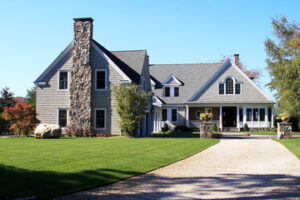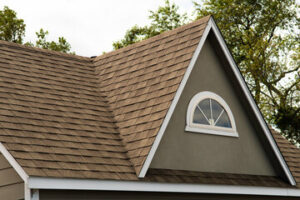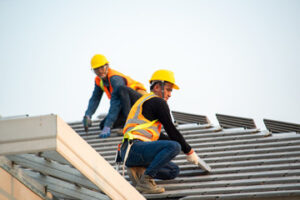Roofing Absecon NJ is one of the areas where the choice of products and materials is most wide open. There are now a lot of different styles and colors to choose from for shingles and metal roofs.

A roof is the top covering of a building that protects it against rain, snow, sunlight and extremes of temperature. Its structure can be simple with rafters or prefabricated trusses or more complex with sheathing.
When it comes to roofing, there are many different materials that can be used. Depending on the shape and size of the roof, and where it will be located, certain materials are more suited than others. Additionally, the climate will play a role in what kind of roof covering is best suited for the area. Some of the most popular roofing materials include asphalt shingles, single-ply membranes, and slate.
The type of roofing material used is a critical factor in the longevity and overall performance of the roof. The materials must be able to withstand the elements and protect the interior of the building from the sun, rain, snow, and extreme temperatures. In addition to the structural integrity of a roof, it must also look good and add to the aesthetic appeal of the home or structure.
Among the most common roofing materials are asphalt shingles, which come in a variety of colors and styles. Some are designed to resist impact, which can be important if you live in an area that gets a lot of hailstorms. There are also metal roofing options that can be very durable and attractive, adding to the resale value of your home.
Single-ply membranes are another very common roofing material, and they can be either thermoset or thermoplastic. These membranes are manufactured from synthetic rubber polymers and are designed to minimize seams across large roof areas. They are highly resistant to degradation from chemicals, ozone, and ultraviolet radiation.
Wood shingles and shakes are a more traditional type of roofing material, offering a natural, rustic look to your home. They are often produced from cedar and redwood, and they can be quite expensive. However, they are very durable and can last a long time in moderate climate zones.
Roll roofing is a popular choice for low-slope or flat roofs, and it can be either galvanized steel, galvalume steel, or stone-coated steel. This type of roof is easy to install, as the sheets can simply be unrolled on the roof and nailed down. However, it is prone to damage because it cannot expand and contract as well as individual shingles.
Installation
Once the roofing material is chosen, the installation process begins. This includes laying new shingles, as well as cleanup and restoration. During the cleanup phase, old materials, trash, and equipment are removed and the property is restored to its pre-roofing condition. This involves removing any debris from the roof, tending to landscaping, and ensuring pathways are clear.
The shingles are installed by starting with an underlayment layer, followed by the shingle strip. The shingle strip is secured with close nails near the edge and farther apart as it moves away from the edge. A ridge cap shingle is then placed on top to protect the underlayment and add a finishing touch.
Ventilation is also an important part of any roof. It removes moisture from the attic, regulates temperature, and reduces energy costs. Proper ventilation also protects the insulation and helps prevent mold. Installing gable, ridge, or soffit vents can help with this. Another vital aspect of a good roof is waterproofing the valleys. These are areas where the roof slopes meet and form a “V” shape. Water runs through these valleys often, so it’s crucial to waterproof them.
Maintenance
Inspecting roofs on a regular basis can help detect problems before they become serious. Creating a checklist that includes specific items to look for can make the process more manageable and ensure that all areas are addressed. This list may include a visual examination of the shingles to identify loose, worn or missing shingles. It also includes checking the caulking around chimneys, vent pipes and skylights to ensure they are still sealed correctly. It’s important to remember that each season brings specific issues, such as sun damage during the summer and possible hurricane or tornado damage during the fall.
Regular maintenance also includes trimming any large tree branches that hang over the roof. This can prevent the limbs from falling onto the roof during stormy weather and damaging it. It is recommended to hire a professional tree service to perform this task. Inspecting the flashing, which is a thin material installed to direct water away from the areas where roofing planes meet, is another important maintenance item. Replacing the flashing can prevent leaks. The chimney mortar should also be inspected to remove the buildup of a soot-like substance called creosote and replace any cracked bricks. The skylights, chimneys and vents should be cleaned regularly to prevent the accumulation of debris that can block the flow of water to the roof drains and cause localized ponding water.
Repairs
Many people think of a roof as something that’s built and then forgotten, but the reality is that it needs regular maintenance to stay strong. It’s a protective shield from wind, rain and snow, and it prevents moisture from infiltrating the house and damaging drywall, wood and other materials.
Roofing repairs can be as simple as replacing a few missing shingles or as complex as replacing support trusses. The cost depends on the material, the pitch and design of the roof and the size of the project. Generally, the more complex and structural the job, the higher the cost.
Before starting a repair, the roofing crew will examine the inside of the house. They’ll go into the attic or crawlspace to check for soft spots, water stains and any other signs of leaks. They’ll also look at the underlayment – plywood or oriented strand board – to see if it’s time to replace it.
If the roof is leaking or showing signs of deterioration, it’s important to fix it quickly before the problem gets worse. Leaks lead to mold and mildew, which can damage the rest of the house. It’s also a good idea to add insulation during a re-roofing project, which can lower energy costs and make the home more comfortable. The roofing contractors can help choose the right type of insulation for your climate and budget.


